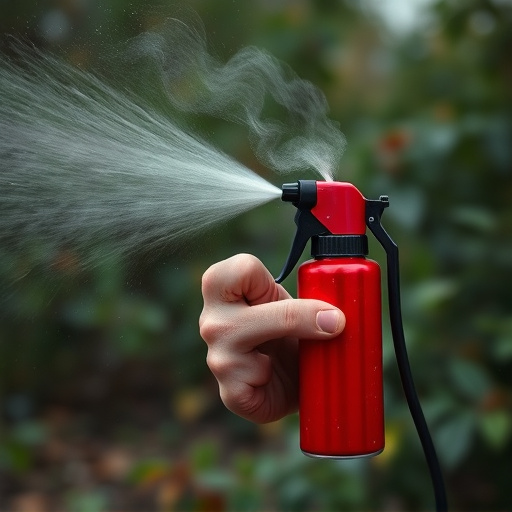Understanding pepper spray's wind dependency is vital for personal safety. Aiming Pepper Spray Wind Direction Tips downwind maximizes impact, while upwind deployment can blow the spray back. Knowing local weather patterns, practicing in various conditions, and adjusting aim accordingly are key to effective use in any environment.
Discover the power of concentrated pepper extract defense products and learn how they can provide effective protection in critical situations. In this article, we explore the basic principles behind pepper spray, offering insights into its functionality. We also uncover wind direction tips for optimal defensive strategy. Additionally, advanced techniques are shared to maximize pepper spray performance, ensuring you’re prepared with the knowledge needed to stay safe.
- Understanding Pepper Spray's Basic Principles
- Utilizing Wind Direction for Effective Defense
- Advanced Tips to Maximize Pepper Spray Performance
Understanding Pepper Spray's Basic Principles
Pepper spray, a powerful defense product, operates on the principle of irritating the eyes and respiratory system of an attacker. When deployed, it creates a temporary yet intense disorientation by targeting sensory receptors, causing the assailant to experience pain, tears, coughing, and difficulty breathing. Understanding this basic mechanism is key to using pepper spray effectively, especially when considering Pepper Spray Wind Direction Tips.
The wind direction plays a crucial role in how pepper spray takes effect. For optimal coverage, it’s recommended to aim for downwind, ensuring the spray moves towards the target. This strategy allows for maximum impact as the irritants are carried directly into the attacker’s face and eyes. Conversely, upwind deployment may result in the spray blowing back towards the user, negating its intended defensive purpose. Knowing these Pepper Spray Wind Direction Tips can significantly enhance personal safety during unexpected encounters.
Utilizing Wind Direction for Effective Defense
Maximizing the effectiveness of a concentrated pepper extract defense product, such as pepper spray, heavily relies on understanding and leveraging wind direction. When deploying any form of self-defense spray, aiming in the direction opposite to the wind ensures that the spray is directed towards potential threats, rather than away from you. This strategic move significantly increases the chances of successful deterrence by ensuring the active ingredients, like capsaicin, are delivered directly onto the aggressor’s face and eyes, causing temporary incapacitation.
Knowing the local weather patterns and understanding how wind gusts can vary throughout the day is crucial for optimal deployment. In open spaces, wind direction can be unpredictable, so being prepared to adjust your aim accordingly is essential. Practicing with a dummy or target in different wind conditions allows users to fine-tune their techniques, ensuring they can effectively use pepper spray Wind Direction Tips under any circumstances.
Advanced Tips to Maximize Pepper Spray Performance
To maximize the performance of your pepper spray, understanding the wind direction is key. Aiming directly at your target, especially in open spaces, can significantly enhance the impact. Consider the following advanced tips to ensure optimal effectiveness:
1. Pepper Spray Wind Direction: Position yourself slightly upwind to allow the spray to move towards your adversary, creating a barrier of irritation and giving you time to escape or defend. In outdoor settings, the natural wind flow should be taken into account; adjust your stance accordingly to benefit from this environmental factor.
Concentrated pepper extract, or pepper spray, is a powerful personal defense tool. By understanding its basic principles, utilizing wind direction strategically, and mastering advanced techniques, you can maximize its effectiveness in unexpected situations. Remember, knowledge is key to staying safe – so equip yourself with these valuable Pepper Spray Wind Direction Tips for ultimate peace of mind.
